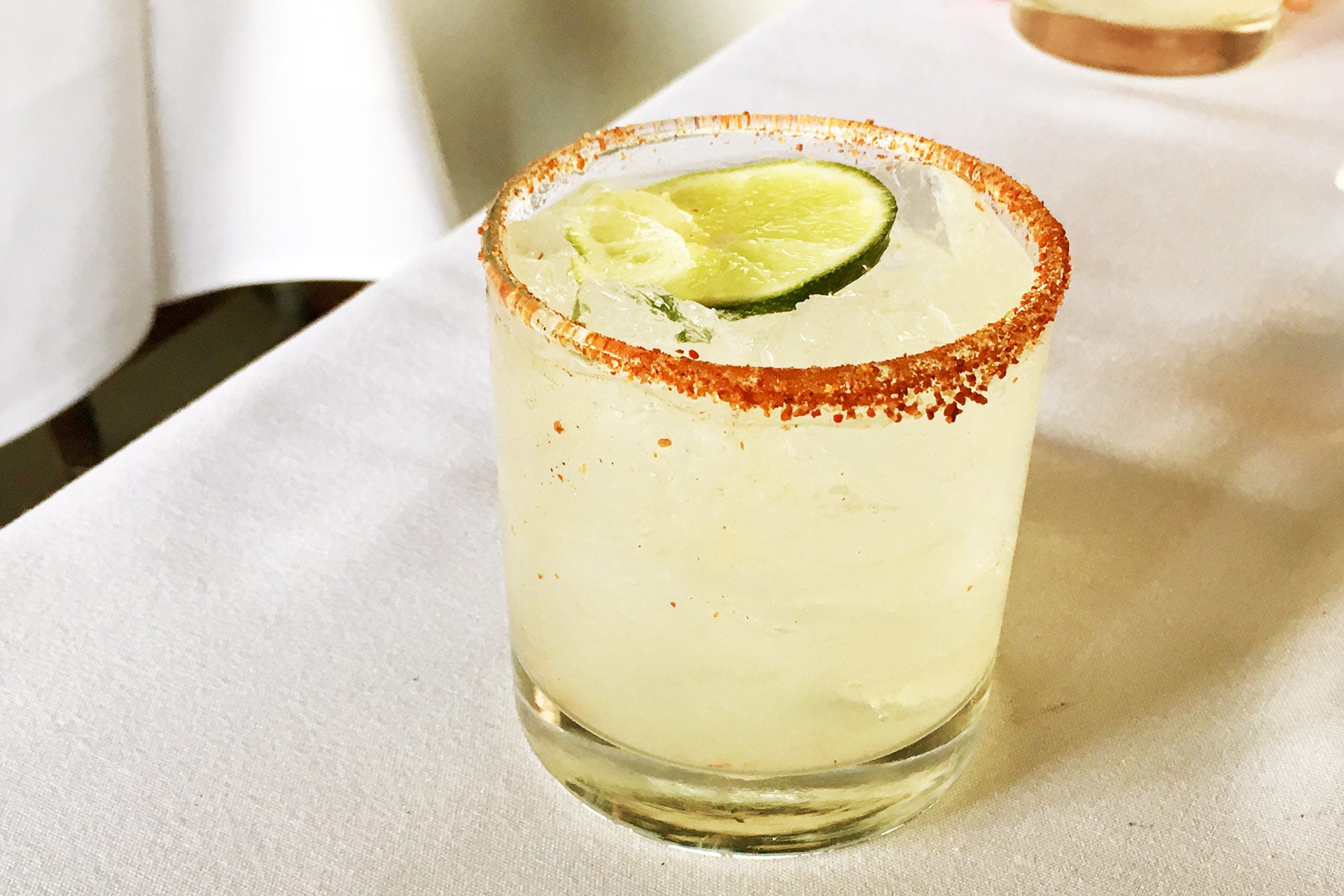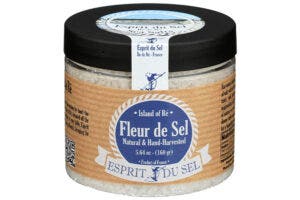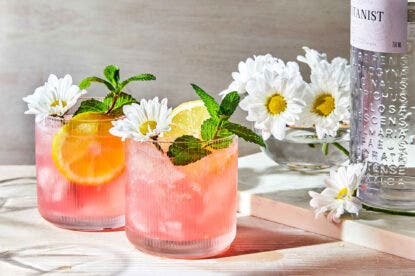A pinch of salt might make your cocktail even better, whether dissolved into a drink, used to rim a glass, or sprinkled on top to add a distinctive finishing touch.
“Salt can benefit a cocktail in many ways, often the same way it benefits food,” explains New York-based bartender and educator ms. franky marshall, who uses lowercase letters in her name. “It can add a savory quality, make certain flavors stand out, mitigate sweetness and make a drink ‘more-ish’ — making you order just one more.”

Why (and How) Bartenders Use Salt in Cocktails
While the salted glass rim may have originated to mask poor-quality ingredients in an over-sweetened drink, today it’s more about accentuating and heightening flavors.
Similar to cocktail bitters, salt “seasons” a drink, says Melissa Brooke, bar director of NYC’s Pine & Polk, and can add “a layer of depth and intricacy and often works to tie all of the ingredients together.” When she’s developing a new drink and feels that an elusive something is missing, often the ingredient is salt, she says.
Yet, which salt to choose? That depends on how you plan to use it.
Mixed into a Drink
A finely-ground salt will dissolve thoroughly into a drink, boosting flavor, explains Eric Scott, the beverage director at Thyme X Table in Bay Village, OH. He takes that concept even further, dissolving fine sea salt into hot water into a 20% saline solution (a ratio of 20 grams salt to 100 grams water).
“That will make the flavors pop without making the drink taste salty,” he says. “Salt is a flavor enhancer; it cuts down on bitterness and accentuates sweet and tart.”
Of note: Scott recommends skipping iodized (table) salt, “as it is very high in sodium.”
Try it in these drink styles:
Stirred-style drinks with amaro, such as a Negroni or Boulevardier. “It cuts down on bitterness,” Scott notes. A very small amount of salt can also enhance drinks with a more delicate flavor profile, marshall adds: Just a couple of drops of salt solution mixed into a French 75-style drink made with Cognac, Champagne and a grapefruit/cardamom sherbet “brought out the grapefruit notes and added length and complexity.”

To Rim a Glass
Flaky sea salt, such as neutral Maldon or Himalayan pink salt, is the bartender go-to for rimming glasses. Slightly large, coarse grains may work best for glass rims, marshall notes, as they tend to have less moisture and therefore stay crystallized longer.
Salts mixed with sugar, spices and other flavorings, as well as commercial “cocktail salts” that incorporate a bit of color also are popular glass rim choices; just be sure the flavors harmonize with the drink, bartenders caution. Here’s how to rim a glass.
Try it in these drink styles:
Margaritas and Palomas, of course. While it’s not a one-size-fits-all template, citrusy and fruit-forward drinks often receive salt rims. “Salt really brightens up a shaken, citrus-forward cocktail,” Brooke observes. “It amps up the sweet, savory and tartness of the drink.” For example, she mixed salt with grains of paradise/cubeb pepper to rim a margarita riff.
Salt rims also work well with drinks that incorporate chocolate. Scott adds, “especially bittersweet dark chocolate.”

Sprinkled on Top
If you’ve enjoyed a salted caramel or chocolate chip cookie with a bit of flaky salt on top, you know that a small amount of salt can add a finishing touch to sweet treats—or provide an unexpected complement to savory or citrusy drinks.
Paula Lukas, a New York-based bartender, beverage and mixology consultant, recommends a pinch of fine pink Himalayan salt for drinks that include fruit liqueurs, vanilla or chocolate liqueurs, and even espresso martinis. She’s also a fan of colored salts “to add a pop of color.”
Try it in these drink styles:
Dessert-like drinks, espresso martinis and drinks that incorporate fruit. “Cocktail salts can also heighten savory drinks,” Brooke adds. For example, she points to a mezcal, fresh corn and avocado drink inspired by Mexican street corn, which she finishes with a mix of “street corn seasoning”: ancho chile, cumin, chipotle and salt. “I love how salt makes your mouth water and makes you want to go back in for another sip.”
A more home-friendly version might include a pinch of celery salt atop a gin and tonic.
Cocktail Salts to Have at Home

Maldon Sea Salt
Chefs and bartenders favor this English sea salt for its flaky texture and relatively neutral flavor for rimming a glass or sprinkling on top, which won’t overpower the drinks other flavors. “They’re coarse enough that they cover a nice area if you’re using them to coat the rim of a glass, without being overwhelming,” says Brooke.
Plus, “the flakes melt nicely on the tongue, creating a pleasant mouthful.”
“It has a magical crunch,” adds Scott. Maldonsalt.com

Himalayan Pink Salt
Himalayan pink salt is favored by many bartenders for its subtle flavor and hint of color. Grind finely to mix into drinks, or use a coarser grind for a substantial, blush-hued glass rimmer. marshall favors its “mild” and “delicate” profile. Of note, Scott cautions that the salt sometimes can be “sulfuric,” so use with care. Multiple brands

Fleur de Sel or Flor de Sal
Translated as “flower of salt,” this light, quick-dissolving sea salt comes from a number of countries and regions, and each can have its own unique flavor profiles (think: wine terroir!). Scott favors the classic French fleur de sel for its “briny” characteristic. “I love it for Palomas,” he says, and describes the Spanish and Italian versions as “a little more mild.” Multiple brands

Tajín
A blend of powdered chile peppers, lime and sea salt, this Mexican seasoning is sought after to add mild heat and ruddy color to agave-based drinks or beer cocktails. Because it’s mixed with other ingredients, it doesn’t read as powerfully salty, Scott notes. Taijin.com

Colored Salts
While there’s a wide range of commercial cocktail salts in various hues, Lukas uses Snowy River’s colored cocktail salt flakes “when I want something to pop,” she says. “It’s not artificial and it stays on the rim.” In each bottle, there’s a mix of flaky salt, sugar, and tiny edible wax “beads” in shades like yellow, pink, and pale blue. Snowyrivercocktails.com

Flavored Salts
Flavored salts can add pleasing flavor, aroma and color to drinks. For a savory punch, Brooke suggests Trader Joe’s Mushroom Umami Seasoning Blend as an alternative to mixing a DIY mushroom powder-salt blend. Elsewhere, a hibiscus salt (like Wild Hibiscus Flower Pyramid Salt Flakes) can add a floral touch and vibrant hue, or a chocolate salt (like Bittermen’s Chocolate Fleur de Sel) can add interest to a dessert-style drink.
Last Updated: May 9, 2023















